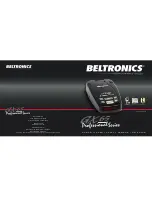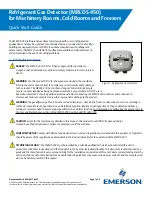
22
23
Radar
POP
Laser
Red Light Cameras
How Radar Works
Traffic radar, which consists of
microwaves, travels in straight lines and is
easily reflected by objects such as cars,
trucks, even guardrails and overpasses.
Radar works by directing its microwave
beam down the road. As your vehicle
travels into range, the microwave beam
bounces off your car, and the radar
antenna looks for the reflections.
Using the Doppler Principle, the radar
equipment then calculates your speed by
comparing the frequency of the reflection
of your car to the original frequency of the
beam sent out.
Traffic radar has limitations, the most
significant of these being that it typically
can monitor only one target at a time. If
there is more than one vehicle within
range, it is up to the radar operator to
decide which target is producing the
strongest reflection. Since the strength of
the reflection is affected by both the size
of the vehicle and its proximity to the
antenna, it is difficult for the radar
operator to determine if the signal is from
a sports car nearby or a semi-truck several
hundred feet away.
Radar range also depends on the
power of the radar equipment itself.
The strength of the radar unit’s beam
diminishes with distance. The farther the
radar has to travel, the less energy it has
for speed detection.
Because intrusion alarms and motion
sensors often operate on the same
frequency as X, and K-band radar, your
GX65 will occasionally receive non-police
radar signals. Since these X-Band
transmitters are usually contained inside
of a building, or aimed toward the ground,
they will generally produce much weaker
readings than will a true radar encounter.
As you become familiar with the sources
of these pseudo alarms in your daily
driving, they will serve as confirmation
that your GX65’s radar detection abilities
are fully operational.
How “POP” Works
“POP” mode is a relatively new feature for
radar gun manufacturers. It works by
transmitting an extremely short burst,
within the allocated band, to identify
speeding vehicles in traffic. Once the
target is identified, or “POPPED,” the gun
is then turned to its normal operating
mode to provide a vehicle tracking history,
(required by law).
NOTE: According to the operator’s
manual from the radar gun manufac-
turer, tickets should not be issued in
POP mode.
How Laser (Lidar) Works
Laser speed detection is actually LIDAR
(Light Detection and Ranging). LIDAR
guns project a beam of invisible infrared
light. The signal is a series of very short
infrared light energy pulses which move
in a straight line, reflecting off your car
and returning to the gun. LIDAR uses
these light pulses to measure the distance
to a vehicle. Speed is then calculated by
measuring how quickly these pulses are
reflected given the known speed of light.
LIDAR (or laser) is a newer technology
and is not as widespread as conventional
radar, therefore, you may not encounter
laser on a daily basis. And unlike radar
detection, laser detection is not prone to
false alarms. Because LIDAR transmits a
much narrower beam than does radar, it is
much more accurate in its ability to
distinguish between targets and is also
more difficult to detect.
AS A RESULT,
EVEN THE BRIEFEST LASER ALERT
SHOULD BE TAKEN SERIOUSLY.
There are limitations to LIDAR
equipment. LIDAR is much more sensitive
to weather conditions than RADAR, and a
LIDAR gun’s range will be decreased by
anything affecting visibility such as rain,
fog, or smoke. A LIDAR gun cannot
operate through glass and it must be
stationary in order to get an accurate
reading. Because LIDAR must have a clear
line of sight and is subject to cosine error
(an inaccuracy which increases as the
angle between the gun and the vehicle
increases) police typically use LIDAR
equipment parallel to the road or from an
overpass. LIDAR can be used day or night.
How Red Light Cameras Work
Red-light cameras use three basic things:
1) a camera, 2) a way to trigger the camera,
and 3) a computer.
An intersection may have more than
one camera to monitor traffic from
multiple directions. The trigger is typically
a series of wires buried just beneath the
surface of the road. These wires are
separated by a pre-set distance in order to
create a magnetic field or induction loop.
Once a vehicle is in the intersection, the
loop or circuit becomes closed and alerts
the computer to take a picture.
In some states, tickets are issued to
the car’s owner, no matter who’s actually
driving. In this case, the red-light camera
only needs to photograph the vehicle’s
rear license plate. In other states, the
actual driver is responsible for paying the
ticket. In this case, the system needs a
second camera in front of the
car, in order to get a shot of
the driver’s face.




































